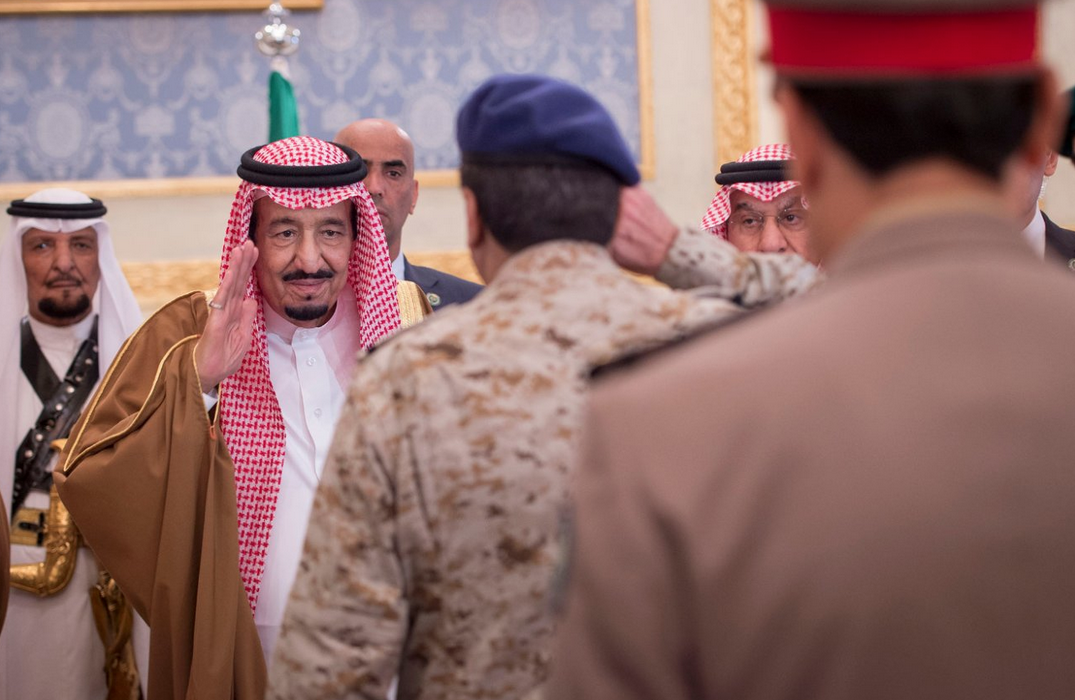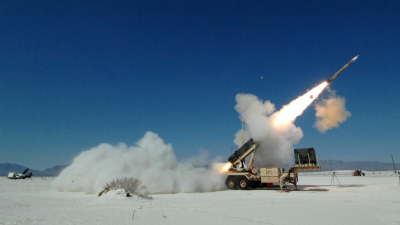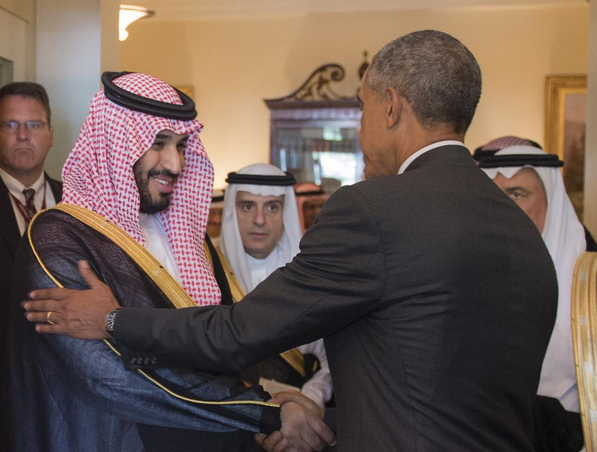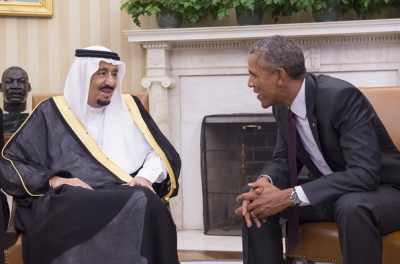Following King Salman’s personal and public support for the P5+1 deal with Iran at the White House last week, the United States and Saudi Arabia have overcome one of the largest bi-lateral diplomatic hurdles in decades. The strong support follows months of salesmanship by the Obama administration and paves the way for continued military and security cooperation between the two countries.
Although Saudi Arabia has supported the agreement, with Saudi Arabia’s Foreign Minister Adel Al-Jubeir saying in July that the Kingdom “has always been in favor of an agreement between Iran and the P5+1 Group that would prevent Iran from acquiring a nuclear weapon,” the strong backing directly from Saudi Arabia’s King Salman in a public statement is a powerful victory for the effort to use sanctions relief to dismantle the threat posed by a nuclear Iran to the region.

Saudi Arabia’s King Salman has supported the P5+1 deal with Iran, paving the way for enhanced U.S.-Saudi military ties.
Still, the United States has been keen to reassure the Kingdom that it remains committed to its security beyond the deal. Saudi Arabia is not only a strong ally of the United States, but it is also one of the biggest buyers of arms worldwide. Saudi Arabia’s military budget grew by 17 percent last year, and the military now amounts to at least 10.4 percent of the kingdom’s GDP, according to an estimate from SIPRI. Defense consultancy IHS Jane’s says Saudi defense spending will be $48.7bn in 2015, a 2 per cent contraction over last year but will reach $62bn by 2020.
That is by far the largest military spending by GDP in the world.
In addition to last week’s visit by King Salman, Deputy Crown Prince Mohammed bin Salman, and a host of other business and government leaders in Washington, U.S.-Saudi diplomacy and bi-lateral military cooperation has been active. Following the announcement of the P5+1 deal to curb Iran’s nuclear program, on July 22nd, Secretary of Defense Ash Carter met with King Salman and his defense minister, Deputy Crown Prince Mohammed bin Salman, in Jeddah on the Red Sea coast to reassure Saudi Arabia about the Iran deal and demonstrate American resolve to protect its strongest ally in the region. Carter and Deputy Crown Prince Mohammed bin Salman met again in Washington last week.
Arms and support sales have also continued between the U.S. and Saudi Arabia. Reuters reports that the latest of those deals might be for two frigates “based on a coastal warship that Lockheed Martin Corp is building for the U.S. Navy, and could reach agreement by the end of the year,” citing sources familiar with the talks. The total sale could top $1 billion.
“We’re not seeing that any strains in the U.S.–Saudi government to government relationship are inhibiting the business relationships,” one source told Reuters in that report. “The Saudis remain very interested in buying U.S. technology.”

The US State Department gave its approval on July for a possible foreign military sale to Saudi Arabia of Patriot Advanced Capability-3 (PAC-3) missiles and equipment, worth $5.4 billion.
Following the most recent proposed military sale of 10 Sikorsky MH-60R Sea Hawk helicopters to Saudi Arabia in late May, U.S. Defense Security Cooperation Agency said in a statement the sale “will contribute to the foreign policy and national security of the United States by helping to improve the security of a strategic regional partner, which has been, and continues to be, an important force for political stability and economic progress in the Middle East…”
Despite the sales and support for Saudi Arabia’s growing military, the U.S. is increasingly seeing competition for being the top supplier to the Kingdom. Recently, a thaw in Saudi-Russia relations has led to multi-billion dollar arms agreements between the Kingdom and Russia, despite the two finding themselves at odds in virtually every regional conflict. In addition to Russia’s support of Iran, Russia has been a big backer of Syria’s president Bashar al-Assad in the civil war that has destroyed much of that country and resulted in the deaths of over 100,000. With recent reports that Russia is now actively backing Syria’s embattled president with Russian boots on the ground and aerial support, the country is at risk of a bad situation becoming much worse.
Foreign Minister Al-Jubeir said last week that Syrian President Bashar al-Assad has lost all legitimacy and has no role in the future of the country.
Despite increased competition from other suppliers, U.S. logistical support for airstrikes by the Saudi-led coalition in Yemen has evidently tipped the scales in the overall effectiveness of those strikes. The U.S. and Saudi Arabia are also cooperating in the fight against ISIS by training moderate rebels within the Kingdom and on airstrikes on ISIS positions in Iraq and Syria. In July, the United States-led airstrikes against the Islamic State in Iraq and Syria surged to record levels, signaling an unprecedented escalation by coalition forces during its year-long conflict with the militant group.
Next week, the U.S. Chamber of Commerce’s U.S.-Saudi Arabia Business Program in partnership with the Committee for International Trade (Council of Saudi Chambers of Commerce) and SUSTG will host a private roundtable meeting with Brigadier General Yousef H. Alharbi, Saudi Defense Attaché to the United States of America on September 15th, 2015.
The invite-only event, hosted at the U.S. Chamber of Commerce in Washington, will provide a forum to discuss U.S.-Saudi military ties and the broader U.S.-Saudi relationship.










